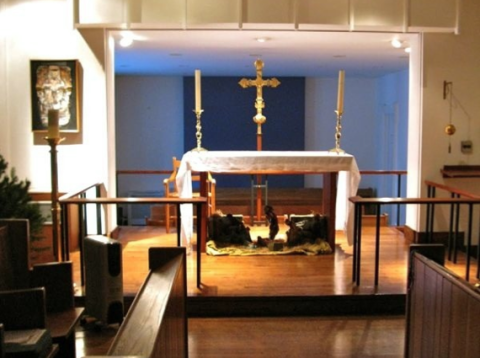Prayer-haunted

Prayers linger in choir stalls, soak into walls. Centuries of prayer can make you feel buoyant in medieval European cathedrals. Gratitude settles over you like a benediction within busy urban shrines. When you can't pray, you can go to a place consecrated for prayer and let the residue of others' prayers carry you effortlessly, wordlessly into a state of prayer.
The sisters of the Community of the Holy Spirit sold their trio of linked brownstones in New York City to Columbia University in order to build a green convent on a vacant lot further uptown. The new convent features environmentally sustainable materials, water heated by solar power, rainwater collection and plant-covered roofs. The choices of stones and bricks and tiles, the uses of light and ventilation, all reflect the sisters' commitment to the reparation of and respect for Earth. They've designed a holy place to live around the act of praying.
I visited the shell of the new convent on a sunny day when the sky glistened with storybook clouds. I made my way from what will be the chapel at the heart of the house, along with the kitchen and refectory, to the upstairs offices and guestrooms, to the future library where French doors open to a garden on the chapel roof. The next two upper stories will be sisters' cells. The elevator will open onto the roof so that elderly sisters can easily enjoy the garden, the sun and the view.




